
A nuclear reactor is a device used to initiate and control a fission nuclear chain reaction. They are used for commercial electricity, marine propulsion, weapons production and research. When a fissile nucleus, usually uranium-235 or plutonium-239, absorbs a neutron, it splits into lighter nuclei, releasing energy, gamma radiation, and free neutrons, which can induce further fission in a self-sustaining chain reaction. Reactors stabilize this with systems of active and passive control, varying the presence of neutron absorbers and moderators in the core, maintaining criticality with delayed neutrons. Fuel efficiency is exceptionally high;low-enriched uranium has an energy density 120,000 times higher than coal.

Brookhaven National Laboratory (BNL) is a United States Department of Energy national laboratory located in Upton, New York, a hamlet of the Town of Brookhaven. It was formally established in 1947 at the site of Camp Upton, a former U.S. Army base on Long Island. Located approximately 60 miles east of New York City, it is managed by Stony Brook University and Battelle Memorial Institute.

Argonne National Laboratory is a federally funded research and development center in Lemont, Illinois, United States. Founded in 1946, the laboratory is owned by the United States Department of Energy and administered by UChicago Argonne LLC of the University of Chicago. The facility is the largest national laboratory in the Midwest.

The Atomic Energy Research Establishment (AERE), also known as Harwell Laboratory, was the main centre for atomic energy research and development in the United Kingdom from 1946 to the 1990s. It was created, owned and funded by the British Government.
NRX was a heavy-water-moderated, light-water-cooled, nuclear research reactor at the Canadian Chalk River Laboratories, which came into operation in 1947 at a design power rating of 10 MW (thermal), increasing to 42 MW by 1954. It was Canada's most expensive science facility and the world's most powerful nuclear research reactor at its construction. NRX was remarkable for its heat output and the number of free neutrons it generated. In the late 1940s, NRX was the most intense neutron source in the world.
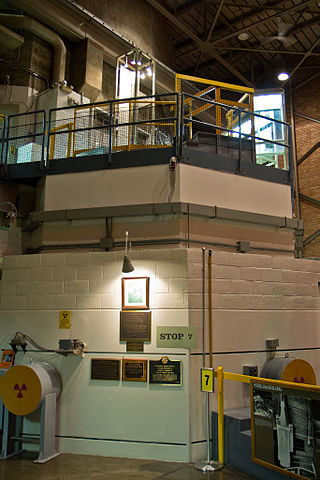
Experimental Breeder Reactor I (EBR-I) is a decommissioned research reactor and U.S. National Historic Landmark located in the desert about 18 miles (29 km) southeast of Arco, Idaho. It was the world's first breeder reactor. At 1:50 p.m. on December 20, 1951, it became one of the world's first electricity-generating nuclear power plants when it produced sufficient electricity to illuminate four 200-watt light bulbs. EBR-I soon generated sufficient electricity to power its building, and the town of Arco and continued to be used for experimental research until it was decommissioned in 1964. The museum is open for visitors from late May until early September.
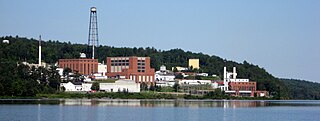
Chalk River Laboratories is a Canadian nuclear research facility in Deep River, about 180 km (110 mi) north-west of Ottawa.
Atomic Energy of Canada Limited (AECL) is a Canadian Crown corporation and the largest nuclear science and technology laboratory in Canada. AECL developed the CANDU reactor technology starting in the 1950s, and in October 2011 licensed this technology to Candu Energy.

Chicago Pile-1 (CP-1) was the world's first artificial nuclear reactor. On 2 December 1942, the first human-made self-sustaining nuclear chain reaction was initiated in CP-1 during an experiment led by Enrico Fermi. The secret development of the reactor was the first major technical achievement for the Manhattan Project, the Allied effort to create nuclear weapons during World War II. Developed by the Metallurgical Laboratory at the University of Chicago, CP-1 was built under the west viewing stands of the original Stagg Field. Although the project's civilian and military leaders had misgivings about the possibility of a disastrous runaway reaction, they trusted Fermi's safety calculations and decided they could carry out the experiment in a densely populated area. Fermi described the reactor as "a crude pile of black bricks and wooden timbers".

The Metallurgical Laboratory was a scientific laboratory from 1942 to 1946 at the University of Chicago. It was established in February 1942 and became the Argonne National Laboratory in July 1946.
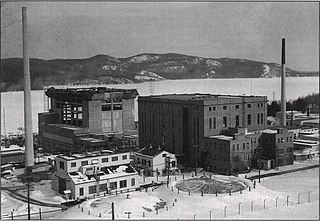
The ZEEP reactor was a nuclear reactor built at the Chalk River Laboratories near Chalk River, Ontario, Canada. ZEEP first went critical at 15:45 on September 5, 1945. ZEEP was the first operational nuclear reactor outside the United States.
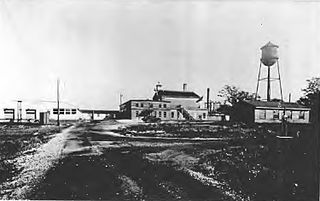
Site A was a research facility near Chicago where, during World War II, research on behalf of the Manhattan Project was carried out. Operated by the University of Chicago's Metallurgical Laboratory, it was the site of Chicago Pile-2, a reconstructed and enlarged version of the world's first nuclear reactor, Chicago Pile-1. The first heavy-water reactor, Chicago Pile-3, was also constructed at this site. Research was carried out under contract to the United States' Office of Scientific Research and Development. After the war, the site became the first home of Argonne National Laboratory, a federally funded research and development center.
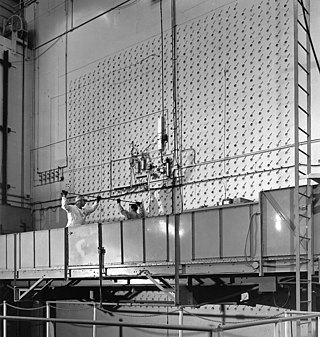
The X-10 Graphite Reactor is a decommissioned nuclear reactor at Oak Ridge National Laboratory in Oak Ridge, Tennessee. Formerly known as the Clinton Pile and X-10 Pile, it was the world's second artificial nuclear reactor and the first intended for continuous operation. It was built during World War II as part of the Manhattan Project.

Winfrith Atomic Energy Establishment, or AEE Winfrith, was a United Kingdom Atomic Energy Authority site near Winfrith Newburgh in Dorset. It covered an area on Winfrith Heath to the west of the village of Wool between the A352 road and the South West Main Line.
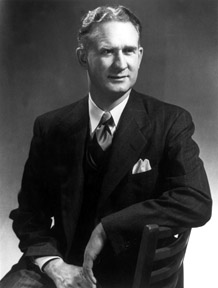
Walter Henry Zinn was a Canadian-born American nuclear physicist who was the first director of the Argonne National Laboratory from 1946 to 1956. He worked at the Manhattan Project's Metallurgical Laboratory during World War II, and supervised the construction of Chicago Pile-1, the world's first nuclear reactor, which went critical on December 2, 1942, at the University of Chicago. At Argonne he designed and built several new reactors, including Experimental Breeder Reactor I, the first nuclear reactor to electrically power a building, which went live on December 20, 1951.

Nuclear industry in Canada is an active business and research sector, producing about 15% of its electricity in nuclear power plants of domestic design. Canada is the world's largest exporter of uranium, and has the world's second largest proven reserves. Canada also exports nuclear technology within the terms of the Nuclear Non-proliferation Treaty, to which it is a signatory, and is the world's largest producer of radioactive medical isotopes.

Chicago Pile-5 (CP-5) was the last of the line of Chicago Pile research reactors which started with CP-1 in 1942. The first reactor built on the Argonne National Laboratory campus in DuPage county, it operated from 1954-1979.
The Windscale Piles were two air-cooled graphite-moderated nuclear reactors on the Windscale nuclear site in Cumberland on the north-west coast of England. The two reactors, referred to at the time as "piles", were built as part of the British post-war atomic bomb project and produced weapons-grade plutonium for use in nuclear weapons.
Brookhaven Graphite Research Reactor (BGRR) was a research reactor located at Brookhaven National Laboratory, a United States Department of Energy national laboratory located in Upton, New York, on Long Island, approximately 60 miles east of New York City. The BGRR operated from 1950 until 1968 and has been fully decommissioned.















